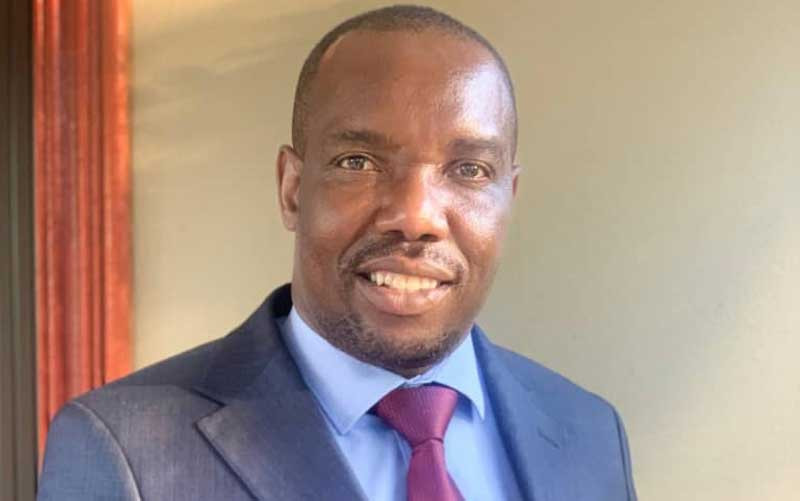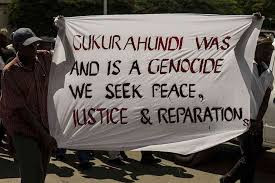
Zimbabwe's carbon credits market has witnessed increased interest since new regulations came into force last year. But challenges like lack of information, skills, and effective structures are still hindering the sector's growth. This week, our business reporter Tafadzwa Mhlanga (TM) had a discussion with Anglistone Sibanda (AS), an official at Africa Voluntary Carbon Credits Market Forum, about developments in this market. Sibanda said so much progress has been made, but it took government longer to realise that value can be unlocked from this market. Here is how their discussion turned out;
TM: The government last year issued Statutory Instrument (SI) 150 of 2023 to regulate trade in carbon credits. What has been the result of this action?
AS: Since the issuing of SI 150 of 2023 there has been an increase in the number of players and prospective project developers. We have also seen increased interest in the climate economy. However, there has been a stalling on the execution of projects that had already been developed, and were at various stages. This was caused by an avalanche of negative publicity, which triggered panic in the international markets and scared investors. The government took time to come up with a framework.
TM: Does Zimbabwe now have the framework?
AS: Even after the framework came into place there have been issues of capacity of the Designated National Authority (DNA), which was mandated to register projects.
Then there was big contention around the share of profits from carbon credits projects, where government demanded 30% of the profits.
TM: What was your impression of government’s position?
AS: This argument is fair on forests and land based credits because in Zimbabwe land belongs to the state. However, this assumption on the part of government created a big challenge on the rest of projects. It still remains an issue that needs to be resolved, as it scares away investors and creates volatility in the space. Some carbon credits projects are capital intensive and have nothing to do with state land or forests. As such, it makes business sense to review the benefits sharing model and treat the carbon business like any other, which pays taxes to government.
- Carbon credits: ‘Govt slept on duty’
Keep Reading
TM: Is there anything that government must do with regards to this?
AS: Government can still develop its own national carbon projects using its own natural resources. These must, as a way forward, be listed as national assets under Mutapa Investment Fund. They can also use them for international debt offsetting, while allowing private sector players to continue doing business that benefits the country. Government simply needs to formulate regulations to ensure that money acquired through the sale of carbon credits is brought into the country's banking system and taxes due are paid.
TM: To participate in carbon trading, a letter of intent to develop a project must be submitted to government. Tell us about this process?
AS: The process is not user friendly. It is heavily reliant on human capital to process the project identification notes. These are also cumbersome to complete without the aid of consultants. The process scares away many young climateprenuers who may have good ideas but lack capacity. I would recommend a digital online system that is user friendly and accessible. This must be aided by an investment into capacity building of the DNA to ensure that the officers are not overwhelmed. However, in the future it will be prudent to establish the DNA as an independent statutory authority with effective monitoring and evaluation systems to reduce the impact of human nature.
TM: Which are the active carbon credit projects in Zimbabwe today?
AS: The sector has been secretive and exclusive. The reason being that we have always had a disconnection when it comes to signed international treaties and huge information deficiency.
The Paris Agreement was signed in 2015, and came into effect in 2016, whereas carbon credits existed long before that. But those who were party to these discussions never saw an opportunity. A few enterprising people saw the opportunities and started development of projects quietly and I cannot blame them.
Government slept on duty only to react (later). The information gaps and lack of knowledge and project development skills make it an elitist sector, although the Paris Agreement is open to anyone who is in climate action to reduce, remove or avoid emissions.
TM: What can be done to rectify these challenges?
AS: The Government of Zimbabwe is currently seized with the process of alignment to the Paris Agreement, which in turn will address most of these challenges backed by the Climate Change Management Bill, which is set to come up with robust and effective regulation of the sector in a bid to enhance transparency and accountability.
The alignment to the Paris Agreement will create a strong compliance market. These credits in fact fetch higher prices and enable government to track the transactions, which puts an end to the clandestine trading of carbon credits.
Project developers will find it sensible to comply with regulations in order to get letters of approval from government, which also enables government to keep stock of its carbon value and be able to balance between its Nationally Determined Contribution targets and the need to export carbon credits.
TM: Which sectors do you think carbon credit projects can be developed in Zimbabwe?
AS: There are over 147 methods of developing carbon credits and they are cross cutting.
They include many sectors from energy, agriculture, biodiversity conservation (wildlife), wetlands conservation, plastic waste removal, afforestation and reforestation, methane capture, methane reduction in feed management for livestock, solid waste management for cities, water management systems, and the transport sector. It is about creativity, research and innovation.
TM: Research carried out last year revealed that there are 24 carbon projects that have produced approximately 29 923 582 credits. Tell us about the financial benefits
AS: It is critical to understand that carbon credits prices vary based on several factors, which include targeted markets, nature of the projects, and the economic and social impact of the projects. It is difficult to compute projected incomes. Cur rently, forestry credits are trading at less than US$1, while International Renew able Energy Certificates fluctuate between US$2 and US$5 per MWH (one megawatt-hour). Hemp projects and biochar credits fetch as high as US$75 to US$120.
Methane capture projects also trade at between US$35 and US$80 per metric tonne of carbon. To be able to compute the estimated value, one needs to disaggregate the data according to sectors, markets and demand.
TM: How much money do you estimate the country can raise from carbon credits if fully exploited?
AS: Carbon credits markets can generate trillions of United State dollars into the economy when government, private sector and civic society begin to work together in a collaborative approach leveraging on each other's normative advantage. It is therefore imperative that all stakeholders work together in developing effective policy frameworks to enhance the growth of the sector.
TM: What do you think are the challenges in developing a carbon credits market?
AS: As mentioned before, the biggest challenge is in lack of information, lack of necessary skills, absence of policies and regulations, absence of effective structures for ensuring compliance, absence of home grown standards and methodologies, absence of established Pan African registry and trading platforms.
To overcome all these, we need a deliberate intentional policy action supported by capacity building initiatives , establishment of strategic synergies and learning platforms and have a regional climate change desk at Southern African Development Community level to coordinate climate action and carbon markets at regional level. This will enhance the impact as well as avoid or reduce chances of carbon colonialism or carbon expropriation by those in the global north.
TM: One of the biggest challenges of carbon credits is that while many credits are being generated, fewer are being utilised to offset carbon emissions, leaving a surplus of credits in the market. If this continues, what would be the long-term effects?
AS: This will soon come to an end. Some of the credits had credibility issues resulting in market hesitation. The recent EU conference came with very drastic border line measures to force compliance. This is expected to create a huge demand for credits for offsetting by EU member states and their companies. The US is also tying up its own systems towards compliance. South Africa has also come up with a progressive policy that establishes compliance markets. All these will increase demand for credible and high value credits that are essential if the world is to maintain temperatures below 2 Degrees Celsius by 2050 and achieve carbon neutrality. Suffice to remind us that all these interventions are aimed at reducing emissions to save the planet.
TM: Are our carbon credits acceptable by financiers outside Zimbabwe?
AS: Yes, they are acceptable and are on demand. This demand will increase after the establishment of the new framework. Their credibility will be guaranteed under Article 6.2 by corresponding adjustments, increasing their value.






